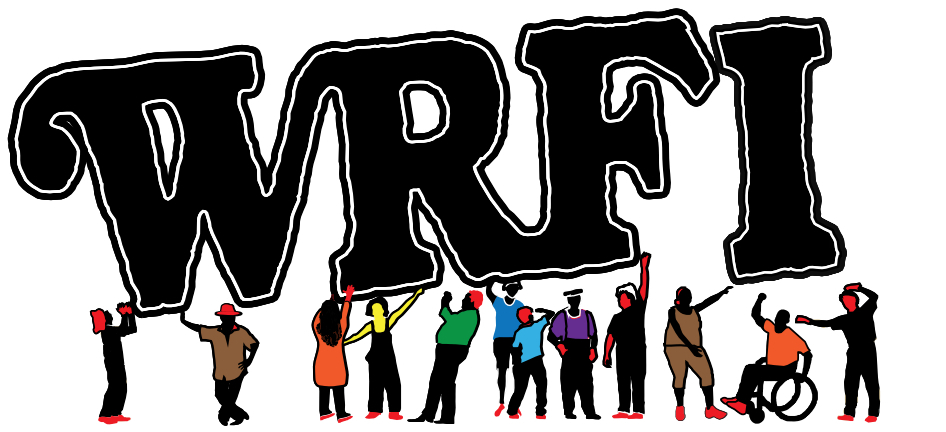Understanding Universal Single Payer Healthcare with Barbara Harrison and Rebecca Elgie from Single Payer NY
http://www.singlepayernewyork.org/
New York Health, A7860
Introduced by Richard Gottfried.
Summary of the bill (.pdf).
Expanded & Improved Medicare For All Act, H.R. 676
Introduced by Rep. John Conyers.
Read the full bill (.pdf).
Read an summary of HR 676 (.doc).
See the full list of Congressional HR 676 cosponsors here.
Brief Summary of the Legislation
Expanded & Improved Medicare For All Act establishes a unique American national universal health insurance program. The bill would create a publicly financed, privately delivered healthcare system that uses the already existing Medicare program by expanding and improving it to all U.S. residents, and all residents living in U.S. territories. The goal of the legislation is to ensure that everyone will have access, guaranteed by law, to the highest quality and most cost effective healthcare services regardless of their employment, income, or healthcare status. With over 45-75 million uninsured in the United States, and another 50 million who are under-insured, the time has come to change our inefficient and costly fragmented non-healthcare system.
Who is Eligible?
Every person living or visiting in the United States and the U.S. Territories would receive a United States National Health Insurance Card and ID number once they enroll at the appropriate location. Social Security numbers may not be used when assigning ID cards.
Healthcare Services Covered
This program will cover all medically necessary services, including primary care, inpatient care, outpatient care, emergency care, prescription drugs, durable medical equipment, long term care, mental health services, dentistry, eye care, chiropractic, and substance abuse treatment. Patients have their choice of physicians, providers, hospitals, clinics, and practices. No co-pays or deductibles are permissible under this act.
Conversion To A Non-Profit Healthcare System
Private health insurers shall be prohibited under this act from selling coverage that duplicates the benefits of the USNHI program. Exceptions to this rule include coverage for cosmetic surgery, and other medically unnecessary treatments. Those who are displaced as the result of the transition to a non- profit healthcare system are the first to be hired and retrained under this act.
Cost Containment Provisions/Reimbursement
The National USNHI program will set reimbursement rates annually for physicians, allow for global budgets (annual lump sums for operating expenses) for healthcare providers; and negotiate prescription drug prices. A “Medicare For All Trust Fund” will be established to ensure a dedicated stream of funding, as well as an annual appropriation to ensure optimal levels of funding for the program.
The conversion to a not-for-profit healthcare system will take place over a 15 year period, through the sale of U.S. treasury bonds.
HR 676 Would Save $400 billion
The U.S. could save enough on administrative costs with a single-payer system to cover the uninsured.
PNHP Co-founders Drs. Steffie Woolhandler and David Himmelstein published this definitive study of the administrative costs of the U.S. health system in the August 21, 2003 edition of the New England Journal of Medicine. After analyzing the costs of insurers, employers, doctors, hospitals, nursing homes and home-care agencies in both the U.S. and Canada, they found that administration consumes 31.0 percent of U.S. health spending, double the proportion of Canada (16.7 percent). Average overhead among private U.S. insurers was 11.7 percent, compared with 1.3 percent for Canada’s single-payer system and 3.6 percent for Medicare. Streamlined to Canadian levels, enough administrative waste could be saved to provide compressive health insurance to all Americans. You can read the study here.
Proposed Funding For HR 676 Program*
Maintain current federal and state funding for existing healthcare programs; employer payroll tax of 4.5%, an employee payroll tax of 3.3%, in addition to the already existing 1.45% for Medicare; establish a 5% health tax on the top 5% of income earners; 10% tax on top 1% of wage earners, 1/3rd of 1% stock transaction tax, closing corporate tax loop-holes; repeal the Bush tax cut for the highest income earners.
*This proposal is put forward by single-payer advocates as one example of a funding system, though HR 676 doesn’t propose a funding program.
Related articles
- Forced collectivization of the health care kulaks via single payer is inevitable under Obamacare (legalinsurrection.com)
- The Real Problem with Obamacare (inthesetimes.com)
- The Single-Payer Signal in the Obamacare Noise (truthdig.com)
- Why the Silence from the Sponsors of the Superior Full Medicare for All? (nader.org)
- People Want Full Medicare for All (counterpunch.org)
- Why the Silence from the Sponsors of the Superior Full Medicare for All? by Ralph Nader (dandelionsalad.wordpress.com)
